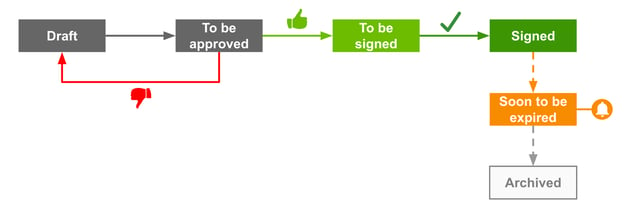Posted by Bill Sengstacken ● 5/5/21 7:51 PM
What is Workflow Automation?
If there is one thing virtually all businesses could benefit from, it would be to automate processes in order to improve efficiency. This is why more organizations are looking for solutions that provide workflow automation as part of their functionality.
All well and good, but what are workflows and why should you automate them?
Workflows are found pretty much anywhere work is being done. Essentially, they are a process by which tasks are accomplished. When someone starts a new job, as an example, they generally work with Human Resources to complete the onboarding process. Typically, this includes ID verification, collecting information for direct deposit, selecting from offered benefits, and the like.
Automated Workflows Increase Efficiencies and Save Resources
Anyone who works in HR can tell you that onboarding is a time-intensive process. There are typically multiple forms to complete, as well as sign-offs on items like Non-Compete and Non-Disclosure Agreements, as well as to take possession of company-issued equipment. All of this could be automated with workflows, and that will save HR a lot of time.
Of course, not every process follows the same exact path. Using the employee onboarding process as an example, a company may be based in one location, but it may have remote employees onboarding from different states, provinces, or countries. Some of those remote employees will have different regulations applying to them, so the workflow would need to accommodate these.
There are countless potential use-cases for workflow automation, so don’t think it’s all about HR. Even something as seemingly simple as getting a document drafted and approved could benefit from a workflow.

Should you look at a workflow visualization, you’ll likely notice that they look a lot like flowcharts. Prior to workflow automation software coming into its own, it was common for businesses to create flowcharts to illustrate how certain tasks and procedures were to be performed. From banking to fast food, having everyone following identical processes made for more efficient and cost-effective operations.
While that certainly was more efficient than having multiple ad-hoc processes, many of these processes are tedious and time-consuming. It just so happens that computers are really good at doing otherwise time-consuming and monotonous tasks - you know, like automating workflows.
Let the Computers Do the Work
With workflow automation, organizations are letting the computers perform those redundant tasks. This frees their teams to do more meaningful work, while also reducing human errors.
Many document management systems have workflow automation built into their solutions, but I would encourage you to be sure that yours is capable of integrating into your existing business systems. If you are part of an in-house legal team, you’re likely interested in Contract Lifecycle Management software. Imagine how integrating an eSignature solution like DocuSign or Adobe Sign into your signature collecting workflow could hasten the time to signature.
As we get ever closer to getting through the pandemic, if we’ve learned one lesson it’s that it’s a really good idea to have systems that work just as well from remote locations as they do in the office. As such, you’d be well advised to look for secure, cloud-hosted, SaaS solutions, not just for workflow automation, but really any mission-critical business system.
Not only does that allow for collaboration from any location, but it also takes a huge burden off of your IT teams. With a document management system that's integrated with Google Drive and Workspace, you’d also be able to provide users with the familiar user experience found in Workspace apps like Google Docs and Gmail.
TL;DR
If your business or organization is mired in processes that take far too long to complete, or where roadblocks repeatedly crop up, it might be a good time to both re-evaluate those processes, and then to see how automated workflow software can make those processes more efficient than before.
Tags: Process Automation
